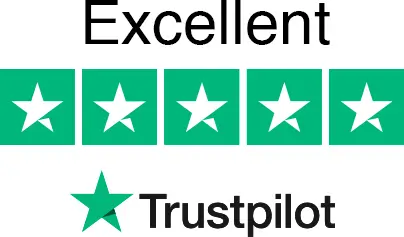Key Takeaways
- Proving constructive dismissal in the UK means you must show your employer committed a serious breach of your employment contract, leaving you with no choice but to resign.
- Comprehensive evidence is essential—gather emails, minutes of meetings, written complaints, timelines, and always keep a clear copy of your resignation letter.
- Failing to follow correct grievance procedures or missing ACAS conciliation and tribunal deadlines can fatally undermine your claim.
- Not everyone is eligible to claim constructive dismissal; check your employment status and length of service, as some exceptions to the minimum period do exist.
- Go-Legal AI offers a step-by-step constructive dismissal checklist, practical templates, and an instant eligibility checker to help you prepare watertight claims.
- Incomplete or poorly organised evidence can lead to disputes, financial loss, or your case being dismissed by the tribunal.
- Our in-depth guide details every legal step and explains why raising a grievance before resignation is critical to most claims.
- Go-Legal AI is rated Excellent on Trustpilot with over 170 five-star reviews from satisfied users.
Step-by-Step UK Constructive Dismissal Checklist (With Download)
Facing unfair treatment or pressure to leave your job often leads to confusion about your rights and what steps to take. Many employees wonder how to prove constructive dismissal and what evidence will stand up in a tribunal. Skipping even one key legal stage may result in your claim being thrown out or losing the compensation you deserve.
This guide sets out, in clear and practical terms, how to prove constructive dismissal with a proven checklist, directly referencing what the law requires. You will discover what amounts to a fundamental breach of contract, practical examples from real workplace scenarios, what evidence to gather, and how to avoid critical mistakes that could weaken your position.
With Go-Legal AI, you can use ready-made document templates, securely organise your evidence, and be guided through each legal step with clarity and confidence. Download your tailored constructive dismissal checklist UK and take control of your claim today.
What is Constructive Dismissal and How Does It Work in the UK?
Constructive dismissal occurs when you resign because your employer’s serious actions or ongoing failures have fundamentally breached your employment contract, effectively making your continued employment impossible. You are not being directly dismissed—instead, the employer’s breach forces you to make an impossible choice.
To prove constructive dismissal under England & Wales law, you must show:
- A fundamental breach of your contract (can be a written clause or an implied legal term).
- You resigned directly because of this breach—not for other, unrelated reasons.
- You did not delay resigning after the breach; delay could suggest you accepted the conduct.
Who Can Claim Constructive Dismissal? Eligibility Criteria and Key Exceptions
Before progressing with a claim, it’s essential to check your legal status and basic eligibility. Employment tribunals in England & Wales only accept constructive dismissal claims from employees (not self-employed, freelancers, or agency workers).
Eligibility checklist:
- Employee status: You must have a contract of employment with the employer.
- Service length: Normally at least two years’ continuous employment by your resignation date (exceptions may apply—see FAQ).
- Prompt resignation: You must resign soon after the fundamental breach.
- Nature of breach: The employer’s behaviour must amount to a fundamental (serious) breach.
What Counts as a ‘Fundamental Breach of Contract’ by an Employer?
A fundamental breach is a serious violation of your contract or a core implied duty, such as trust and confidence, that makes the employment relationship unworkable. Both written and unwritten terms are protected by law.
Common examples of fundamental breach:
- Persistent non-payment or late payment of wages.
- Unauthorised demotion or unjustified downgrading of your role.
- Substantial changes to your duties or working conditions without consultation or your agreement.
- Bullying, harassment, or abusive conduct by managers.
- Forced changes to shift patterns, pay, or location without your consent.
- Ignoring grievance procedures or failing to protect you following complaints.
| Type of Breach | Example Scenario | Why It’s Serious |
|---|---|---|
| Withholding pay repeatedly | Wage payments delayed three times in 3 months | Undermines trust and financial security |
| Sudden demotion | Removed from team lead without consultation | Damages confidence and future prospects |
| Repeated bullying | Aggressive emails and public humiliation | Breaches duty of respect and fairness |
| Significant contract changes | Forced to work weekends without consent | Alters agreed work-life balance |
Constructive Dismissal Checklist UK: What Evidence Do You Need?
Success in constructive dismissal claims hinges on clear evidence. Tribunals assess facts, not stories, so systematic documentation is essential from the very start.
Key steps to build your evidence:
- Maintain written records: Log dates, times, incidents, and who was present every time.
- Save all correspondence: Keep emails, letters, and messages about workplace complaints or changes.
- Record meetings: Summarise what was discussed—email yourself immediately for a time-stamped record.
- Take screenshots: Secure digital proof of messages or evidence from work systems.
- Gather supporting documents: Copies of contracts, payslips, rotas, and any formal complaint.
- Prepare a timeline: Lay out the full story in order, referencing your collected evidence.
- Collect medical notes: If you’ve suffered stress or health issues, obtain supporting notes from your GP.
Types of Documentation That Strengthen Your Case
- Employment contract: Your contract terms and employer’s obligations.
- Email chains: Show your efforts to resolve problems and the employer’s responses.
- Formal grievance letters: Proof you followed procedures before resigning.
- Witness statements: Input from colleagues who witnessed events.
- Personal log or diary: Confirms the frequency and seriousness of incidents.
⚡ Get legal tasks done quickly
Create documents, follow step-by-step guides, and get instant support — all in one simple platform.
🧠 AI legal copilot
📄 5000+ templates
🔒 GDPR-compliant & secure
🏅 Backed by Innovate UK & Oxford
Step-by-Step Legal Process to Prove Constructive Dismissal
Winning a constructive dismissal case depends on following every procedural step, in the right order, without missing any detail.
Checklist:
- Document the breach: Secure all workplace evidence as above.
- Raise a formal grievance: Give your employer a written opportunity to put things right.
- Wait for their response: Allow a reasonable timeframe for your employer to act.
- Resign promptly: If unresolved, resign in writing, specifying the breach in your letter.
- Start ACAS Early Conciliation: Within three months minus one day of your resignation.
- Submit a tribunal claim: Complete the ET1 claim form online if ACAS fails to resolve things.
How to Raise a Grievance Before You Resign
- Draft a formal grievance letter: Specify the breach, relevant dates, and what you want to happen.
- Submit using official channels: Send to HR or your manager as per the staff handbook.
- Keep records: Store copies of all communication and note dates sent or received.
- Attend grievance meetings: Take written notes or ask a colleague to accompany you.
- Follow up: Note if there’s no response—lack of action can itself support your claim.
Making a Tribunal Claim: Timeline and Requirements
- ACAS Early Conciliation: Start within three months of your official leaving date. This is mandatory before any tribunal claim (except for some claims involving discrimination or whistleblowing).
- ET1 claim form: File your detailed tribunal claim online if conciliation fails. Explain your case clearly, referencing evidence and contract clauses.
- Hearing preparation: Organise your evidence pack and prepare a factual, calm narrative for the tribunal.
If you’re unsure where to begin with drafting formal documents, you can use our AI-powered grievance and resignation letter generators to ensure you include every legal requirement in plain, persuasive English.
Key Legal Documents for a Constructive Dismissal Claim — What and Why
The tribunal will expect you to provide specific, clearly organised documents. Think of these as your legal toolkit:
| Document | Purpose | Why It Matters |
|---|---|---|
| Employment contract | Lays out your duties and rights | Proves breaches by your employer |
| Grievance letters | Documents your attempts to resolve issues | Demonstrates procedure was followed |
| Email/correspondence | Tracks all attempts to communicate breaches | Builds timeline and context |
| Resignation letter | Clearly links your departure to the breach | Forms basis for your tribunal claim |
| Evidence of breach | Notes, screenshots, witness statements | Proves the details and seriousness of the breach |
| Medical notes | Connects health impacts to workplace conditions | Establishes seriousness if health affected |
| ACAS paperwork | Shows Early Conciliation was attempted | A legal requirement before tribunal |
| ET1 claim form | Details your complaint formally for the tribunal | Starts the formal legal process |
Avoiding Common Mistakes When Proving Constructive Dismissal
Constructive dismissal claims are often lost due to avoidable errors. Recognise these pitfalls to keep your claim strong:
- Delaying resignation: Waiting too long after a breach undermines your claim.
- Not submitting a grievance: Unless clearly unsafe, always lodge a formal grievance.
- Incomplete evidence: Only presenting part of the story will make your case look weak.
- Unclear linkage: Resignation must be clearly connected to the breach in all documents.
- Ignoring digital evidence: WhatsApp and work system messages are valid proof—don’t forget to save them.
Constructive Dismissal vs. Unfair Dismissal — Understand the Difference
To present a credible case, it’s vital to know which type of claim applies to your situation.
| Dismissal Type | Who Ends Employment | Specific Reason Needed | Example |
|---|---|---|---|
| Unfair dismissal | Employer | Employer must justify | Redundancy without fair process |
| Constructive dismissal | Employee | Employer’s breach | Forced to resign after harassment |
How Go-Legal AI Makes Proving Constructive Dismissal Simple
Our platform turns a stressful, complex process into easy-to-understand steps.
- Tailored checklist: Enter your details and instantly get a constructive dismissal checklist UK to match your scenario.
- Smart letter drafts: Automatically build grievance or resignation letters with every crucial legal point and deadline included.
- Digital file management: Securely store and organise contracts, emails, letters, and evidence—all in one dashboard.
- AI risk review: Our AI copilot analyses your evidence for gaps and offers tips to improve your claim strength.
- Live support: Real-time guidance on each legal step, from eligibility to tribunal claim, ensures you never miss a deadline.
Frequently Asked Questions
How quickly do I need to resign after a fundamental breach?
Resign as soon as possible once you’ve assessed and gathered your evidence. Any delay could legally be seen as you accepting the employer’s conduct.
Do I need to raise a grievance before resigning?
Usually, yes. Lodging a formal grievance demonstrates you gave the employer an opportunity to resolve the issue. Exceptions are rare and apply when a grievance would clearly be unsafe or pointless.
What tribunal evidence is most persuasive?
Emails, signed statements, contemporaneous notes, and documented grievance letters carry the most weight. Digital records, screenshots, and witness accounts also strengthen your case.
Can I claim without a written contract?
Yes. Even if you only have an oral or implied contract, you can claim constructive dismissal. Gather emails, payslips, and any written proof outlining your agreed terms.
Are there exceptions to the two-year minimum service rule?
Yes. You can claim constructive dismissal regardless of your service length if your claim involves discrimination, whistleblowing, or health and safety issues.
What should a resignation letter include for constructive dismissal?
Clearly state the breach that led you to resign, set out a brief timeline, and keep your tone measured and factual.
Can I receive compensation if my claim succeeds?
Yes. Compensation can include a basic award (similar to redundancy) and a compensatory award based on your financial loss—such as future lost earnings. The amount is decided based on your circumstances and the evidence.
How long do constructive dismissal tribunal cases take?
Cases may take four to twelve months from claim submission to hearing. Factors like complexity and the employer’s response can affect timescales.
Do I need legal representation to make a claim?
You don’t need a solicitor to file a constructive dismissal claim—many employees do so themselves using expertly drafted templates. For complex cases, advice from one of our on-demand legal experts is recommended.
What if my employer contests my claim?
They must present their own account with evidence. The tribunal decides based on how convincing and well-documented both sides’ stories are.
Not sure about your eligibility? Use our instant constructive dismissal checker or tap into our interactive FAQ library for advice tailored to your circumstances.
Prove Constructive Dismissal with Go-Legal AI’s Powerful Digital Tools
Understanding how to prove constructive dismissal means mastering legal process, gathering decisive evidence, and staying ahead of strict deadlines. With this guide, you now know the steps, the pitfalls, and the importance of getting every detail right.
Mistakes like missing deadlines or presenting vague, incomplete documents can cost you your claim and thousands in compensation. Leverage the simplicity and reassurance of our AI-powered checklists, smart document tools, and professional templates to present a robust, credible case from day one.
Take control of your constructive dismissal process with Go-Legal AI—evidence collection, document drafting, and legal step tracking all in one user-friendly platform. Start your free trial and remove uncertainty from your most important legal tasks.
⚡ Get legal tasks done quickly
Create documents, follow step-by-step guides, and get instant support — all in one simple platform.
🧠 AI legal copilot
📄 5000+ templates
🔒 GDPR-compliant & secure
🏅 Backed by Innovate UK & Oxford










































